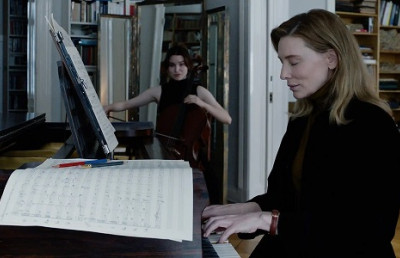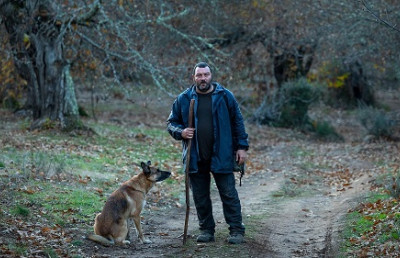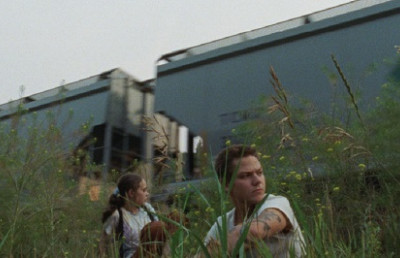“Nicolas Who?”
An Irreverently Linear Journey through the Films of Nicolas Roeg, Director of Well Over Four Films
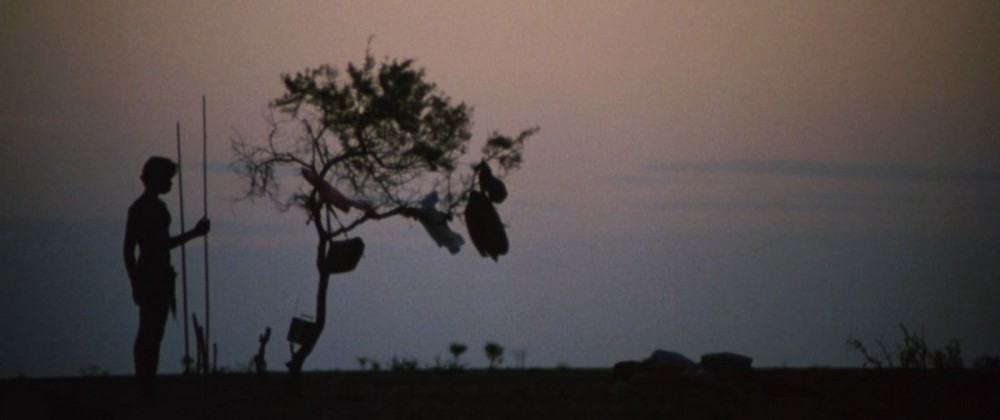
Walkabout (Image source, Criterion)
“There’s something that happened, and there’s a kind of ring around that event – or it’s fenced off – and everything else is okay around it, but there’s just something that happened in that short space of time that we can never get that far away from . . . we’re attached to this event, and we’re like on a rubber band, and life can go on and on and on, but eventually it just keeps coming back to that thing. And that’s some kind of trauma, I guess.”
- Nick Cave on the elasticity of grief in One More Time with Feeling (2016)
“We are not made or unmade by the things that happen to us. It is our reaction to them that matters.”
- Father Niles in Cold Heaven (1991)
Much has been written about the exponential growth of American film in the 1960s, conveniently bundled into such denominations as “New Hollywood” for the introduction of “anticlimax” to the nation’s cinematic lexicon, “the Film School Generation” for the early work of the country’s first wave of directors with a film degree, and “experimental” for just about everything else unclassifiably representative of the decade’s flamboyant counterculture. Wading through the ebbing waters of the various New Waves flowing across Europe, the medium was effectively reinvented during this period to reflect America’s changing cultural landscape, as well as to embrace the developments in cinematic storytelling as manufactured across the Atlantic.
Lost among the chaos, though, were the utterly unique voices of outsiders to the industry, who were tossing away their academic careers for a shot at animating their paintings of puking heads, or applying their education in biochemistry and literature to mock-doc screenplays about the dystopian future of dermatology. While Davids Lynch and Cronenberg both went on to be embraced, albeit warily, by Hollywood, they unwittingly left behind a colleague whose philosophies of identity, sexuality, and trauma aren’t totally dissimilar to their own. Even if you don’t know him by name, Nicolas Roeg has had a profound influence on visual storytelling over the past five decades, both in his native Britain and, though we’ve still yet to realize it, among his eventual North American audience.
Sharing an affinity for non-cinematic elements of storytelling with Cronenberg, a man who’s aged into an uncanny doppelganger of Samuel Beckett and Vincent Price, and Lynch, a man whose wild mop has grown into an ambiguous terror from one of Francis Bacon’s canvases, Roeg, an apt homonym for his guerilla style and an abruptly jump-cut anagram of “Borges,” reinvigorated the medium with artistic ideas outside the realm of film’s familiarity. The influence of Roeg’s cinematic dialect of shattered chronology and existential Venn-diagramming continues to be found repackaged everywhere from TV’s gritty True Detective (2014-15, 19) to film’s schizophrenic Buster’s Mal Heart (Sarah Adina Smith, 2016).
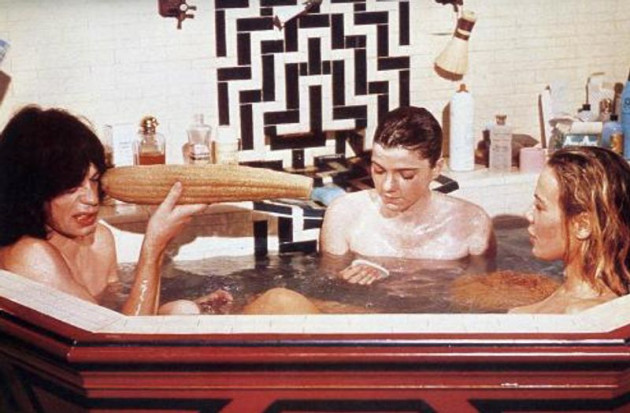
Performance (1970) (image source Warner Bros)
Roeg was the singular voice behind a slew of elliptical plot lines spanning the 1970s, most notably co-directing Mick Jagger in Performance (1970) and setting off on his own to make Walkabout (1971), Don’t Look Now (1973), and The Man Who Fell to Earth (1976) with the remainder of the decade. Despite the controversies each film incited due to their excessive sexuality and alleged unintelligibility, all four movies landed with a splash that never quite subsided. Today the films of Roeg’s most crucial decade remain fringe features, perhaps most commonly taught in film school, stumbled upon on the midnight movie circuit, or, unfortunately, miscredited in YouTube clickbait listing movies that feature unsimulated sex scenes. But the context of these pictures is rarely considered on such occasions, as the screenings are instead focused upon the technical acumen of their director, the certifiably weird presentation of ideas, and the exploitation of gossipy video content, respectively.
The narrative that’s being glossed over is significantly greater than each individual film suggests, and, as mentioned, spans nearly five decades rather than just one. From his first directorial feature, Roeg fought tooth and nail to maintain the support of producers, to prevent censorship and laceration in post-production, and, finally, to see each film through to distribution (in many cases, several years after completion). Not only did such distribution struggles plague him through to the end of his career, but even prevented most American cinephiles from realizing that the director stayed incredibly active until his final film in 2007. Glancing through the director’s filmography in 2018 makes one question the mystical forces at work preventing a film going public from realizing the guy who made Don’t Look Now also whipped together a Heart of Darkness adaptation with John Malkovich in the early ’90s, and helmed an episode of The Young Indiana Jones Chronicles shortly after.
It was mostly out of curiosity that I chose to investigate Roeg’s full filmography, from his late cinematographer years in the ’60s to his astonishingly untalked-about final directorial feature. I imagined the most difficult aspect of his films would be digesting the challenging elliptical chronology each of his stories takes, frantically cutting between present, past, and mystic irreality without warning. I looked forward to diving deeper into the mind of the man who has made us squeamish to think of our favorite ’70s rock icons, artists we viewed in a totally new light after spending two hours alone with them and a Roeg-sanctioned script. Perhaps more so, I was anxious to find out what happened in Roeg’s career that severed his success from the parallel trajectories of Lynch, Cronenberg, and other experimentalists with an outsider’s perspective.
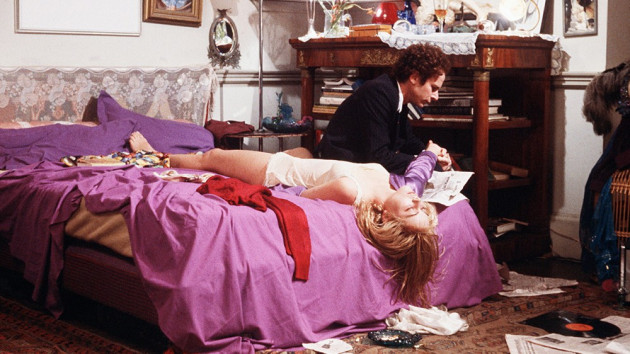
Bad Timing (1980) (image source Criterion)
But this investigation took an unexpected turn somewhere around the release of Bad Timing – objectively his most identifiably Roegian picture and, in my opinion, his best – as his career slowly, agonizingly, went down in flames. By the early ’90s, his work was virtually unrecognizable save for a near-subliminal metacommentary on his own career he laced into every now-inaccessible TV movie. Despite the immortalization guaranteed by succulent Blu-Ray re-releases of his ’70s masterpieces, there’s shockingly little Region 1 media available to contextualize these works besides a few long-out-of-print books written in the early ’90s and dated DVD and VHS copies of his subsequent feature films floating around eBay, typically just beyond an acceptable price range.
From his earliest directorial efforts, nearly every Nicolas Roeg film follows the same formula: 1) An unspeakable personal trauma is inflicted upon one or more characters in the opening climactic scene, leading into 2) a slow, existential denouement as they manage the elasticity of grief which, as another Nick puts it, will snap back harder the further you push it away, which results in 3) a painful emotional coma caused by an enslavement to the past and 4) an unfulfilling irresolution. Whether or not you want to call this self-fulfilling prophecy, I can’t think of a better format for a retrospective of Roeg’s career.
1. The Traumatic Climax (’60s & ’70s)
Unlike both Davids, Roeg wasn’t entirely feral at the time of his directorial debut. Nic stumbled into his first gig on a film set at a young age, working his way up from menial positions (dubbing French films, making tea) beginning in the late ’40s. He was already projecting his virulent distaste for cinematic convention by the ’60s while hijacking Truffaut’s Fahrenheit 451 (1966), Richard Lester’s Petulia (1968), and John Schlesinger’s Far From the Madding Crowd (1967) as cinematographer after getting sacked by the renowned traditionalist David Lean while shooting Doctor Zhivago (1965). By the end of the ’60s he’d teamed up with another outsider to the medium, the painter Donald Cammell, to realize Cammell’s script for Performance, a project that would see the two filmmakers begin to imitate the _Persona_-like merging of identities plaguing their two male leads – and, incidentally, a project that would be shelved for two years while the world prepared for it.
Touted as the ultimate ’60s film, Performance was a decisive moment for both filmmakers, whose careers couldn’t have differed more despite the spiritual fusion they cultivated while working together. In being such an acute representation of the times, the film’s delayed distribution was tied to the staunch conservatism of Warner Brothers’ executives who, as Roeg recalls in a BBC documentary on Cammell, threatened to sue the directors over the film’s rampant sexuality, graphic violence, and frivolous drug use. After parting ways with Cammell (physically, at least), Roeg strayed significantly from free love and hallucinogens and instead began dealing with natural human inebriants (guilt, ignorance, remorse) and started employing sex solely as a precursor to trauma.
Pushing through the brutal critical reception of Performance, Roeg released the relatively well-received Walkabout, garnering interest from critics and general audiences, specifically Christian viewers, likely due to its source material’s New Testament themes. But these were the very same demographics he’d disgust with Don’t Look Now (see: Donald Sutherland and Julie Christie’s infamous sex scene) and alienate altogether with The Man Who Fell to Earth (see: Roeg’s comments denouncing sci-fi films about “little green men”). With these three films, Roeg had established himself as an incredibly adept adapter of diverse screenplays to a new medium, typically tossing out key components of his literary source material altogether to emphasize film’s possibilities in navigating the mental spaces of its subjects. Like Sandy’s dream of the robins in Lynch’s Blue Velvet (1985), though, casual moviegoers and critics mistook his exaggerated jump-cuts and freeze frames as irony or pretension rather than earnest storytelling devices.
By the end of the ‘70s, Cronenberg was standing out amongst a desolate Canadian film scene with a slew of sociologically pertinent horror pictures despite never having stepped foot on a proper film set prior to Shivers (1975). Lynch was turning heads with the long-delayed release of Eraserhead (1977), which echoed the perceived grotesque nonsense of Roeg’s work, yet landed him the prestigious honor of directing (future) Sirs John Hurt and Anthony Hopkins in The Elephant Man (1980), also finding himself front and center in his first professional gig. With both directors on the cusp of engaging in their most commercial films of their careers, Hollywood was clearly just as interested in outsourcing jobs to unconventional directors as it was supporting the blockbuster output of Coppola, Spielberg, Scorsese, and Lucas (both Lynch and Cronenberg were considered to helm Return of the Jedi; I can’t imagine Roeg’s name ever came up in that conversation).
Despite The Man Who Fell to Earth paving the way for Star Wars (George Lucas, 1977) and a massive sci-fi revival, not to mention inspiring the font for Iron Maiden’s indelible t-shirt designs, Roeg’s career looked significantly less promising. Instead of receiving recognition for his landmark contributions to film in the 1970s, he was reviled for luring mass audiences with his rock star leading actors and subjecting them to convoluted storylines chock full of equally-convoluted eroticism. Rather than developing a reputation for filming challenging scripts with amateur actors, he was viewed as a risky directing choice, leading him to be briefly considered and ultimately passed over to direct Flash Gordon, Out of Africa, Hammett, and a slew of fascinating and remarkably unfilmable original concepts co-written with abetting screenwriters Allan Scott and Paul Mayersberg which never made it to production.
Additionally, the director seemed to leave a mysterious negative imprint on everyone who was subjected to him or his ideas: James Fox quit acting at the peak of his career following his performance in Performance to instead devote himself to the ministry of Evangelical Christianity (he later returned to acting, recently playing the Pope alongside Performance co-star Anita Pallenberg’s Queen in Mister Lonely (Harmony Korine, 2007), while Art Garfunkel learned upon wrapping up filming on Bad Timing (1980), a movie about his character’s girlfriend attempting suicide, that his real-life girlfriend had just taken her own life. In spite of all this, though, Roeg’s downward spiral could simply be chalked up to his movies’ inability to be condensed to a two-minute trailer that resembles any pre-established marketable genre.
By 1978, the first critical text on Roeg was written by Neil Feineman, a young American film scholar who makes the case for the director’s work to be taught in film schools everywhere. His mission statement for the book (simply called Nicolas Roeg, part of a larger series on promising directors of which I can’t seem to find any other entries) is to stimulate retrospectives of Roeg’s work and encourage new viewers – no, “sympathizers” – to watch his films. He explains Roeg’s characters as impossible to identify with, rather citing the films more broadly to be situations all-too-familiar to any audience; it’s easier to connect with a character when you’re not too busy wishing to trade places with them.
However, Feineman’s book never saw a second printing, and Roeg wasn’t the subject of another similar text again for another decade. As if to foreshadow the thematic disrespect of the remainder of his career, the first chapter is entitled “Nicolas Who?,” with “Nicolas” being misspelled as “Nicholas” on each of the succeeding pages’ headers. It’s also somewhat telling of the American public’s reception of the book, its subject, and his films that the only copy I was able to procure was tossed out by the Mohawk Valley Community College Library with a giant “DISCARD” stamped across the bottom. Two years after the book was published, the American film going public continued saying the same of Roeg’s movies.
2. Denouement and Grief Management (’80s)
Roeg burst into the new decade full throttle with the X-rated Bad Timing, a project that, he’s joked, was named after his career. Seemingly taking past criticisms into consideration, Bad Timing tells the story of a fatal love affair in excruciating close up in order to avoid the multitude of loose ends in The Man Who Fell to Earth, while simultaneously doubling down on visual rhymes as a structural tool to weave together interrelated storylines from the recent past and the critical present. In place of free love we see a mostly-monogamous relationship wherein sex quickly becomes less a source of pleasure than an unhealthy obsession for the male delegate, while drugs play the role of self-annihilating ammunition rather than hedonistic release for the female. Bad Timing saw Roeg master his ability to tell a story the way he – the way anyone – would perceive it, where nothing in the present can exist without frequent, sudden flashbacks to the past.
Rather than establishing him as a groundbreaking figure in the ebbing climax of reinvention in American film (actually a British production, despite its predominantly American cast), Roeg was instead established as a perversion of this movement, an unclassifiable and therefore unmarketable filmmaker who specialized in off-putting erotica. Despite taking home the People’s Choice Award at TIFF in 1980, the people’s reaction was quite similar to that of the Cannes audience a decade later when David Lynch took home the Palme d’Or for Wild at Heart (1990). It was a crushing defeat of a major victory for which Roeg, unlike Lynch, was never really able to redeem himself.
While his ambition peaked with Bad Timing, so too did the negative feedback (“a sick film made by sick people for sick people,” raved his own distributor, while an unnamed actor put their friendship on hiatus for a few years after watching the film). Were it not for a blossoming relationship (both professional and personal) with the film’s lead actress, Theresa Russell, Bad Timing could potentially have been the end of the road. From the perspective of 2018, it essentially was.
After a few years of dejection, Roeg christened this new era with what wound up being his Heaven’s Gate. Eureka (1983), perceived to be his biggest trainwreck since filming an actual exploding locomotive in Morocco as second unit director on Lawrence of Arabia (David Lean, 1962), was shelved until 1985, where it only played a few nights in select cities. Danny Boyle has called the film’s obscurity even within Roeg’s obscure filmography “a severe injustice.” The film, like Bad Timing, did not receive a Region 1 home media release until its DVD resuscitation in the early ’00s. Looking back, Eureka stands out among Roeg’s other films in that its subject spends most of his screen time plodding through the aftermath of total elation rather than absolute despair. Widening Roeg’s range of emotional motifs to include new extremes that result in the same emotional consequences, perhaps Roeg was letting on that wild success wasn’t what he was looking for in the industry, as he was clearly aware that the happiness would be short lived.
With Bad Timing as the peak of his cinematic expressiveness, Roeg’s long denouement was marked by decreasingly filmic forays into TV and theater, beginning with Insignificance (1985), reworked from Terry Johnson’s stage play of the same name. Insignificance also marks his first film to place its emotional climax at the end of the picture rather than the very beginning, and the timeline remains more consistently linear than any of his previous efforts. Yet it’s entirely Roegian in its dissection of time, as well as its probing humanity; intertwining the lives of four unnamed characters in the 1950s who we very clearly identify as caricatures of Marilyn Monroe, Joe DiMaggio, Joseph McCarthy, and Albert Einstein – the four figures of a distinctive period of American celebrity most unfairly reduced to a single trait – each one becomes more complex over the course of the film’s hour and fifty minutes. In transforming each of these symbolic figures into flesh-and-blood people, Roeg also takes a considerably more macro approach to this screenplay, ironically using these newly-fleshed-out characters as synecdoche for celebrity more broadly.
The following year, Castaway (1986) felt like one last dramatic attempt at Roeg’s anti-romantic cinema, pitting a chauvinistic Oliver Reed against a usually-nude Amanda Donohoe on a private tropical island. Roeg’s self-described exhibition of married life in fast-forward, the almost-entirely linear Castaway offers little to the Roeg canon aside from its distributors’ unabashed conviction to start selling Roeg’s movies to American audiences purely as sex, despite this particular film being about a married couple’s excruciating year of celibacy. This was the year Lynch and Cronenberg each released their first career path-setting studio films – Blue Velvet being a perverse rebound from Dune (1984), Lynch’s own Eureka, and The Fly (1986) being a mainstream audience’s introduction to Cronenberg’s iconic gross-out visuals following the relatively subdued Dead Zone (1983) Unfortunately, the same was true for Roeg.
After directing a short, “Un ballo in maschera” for the anthology Aria (1987) alongside Jean-Luc Godard, Robert Altman, and other directors for whom the ’80s were an uncharacteristically fruitless decade, Roeg began something of a bipolar relationship with television. Track 29 (1988), a theatrically released collaboration with British TV royalty Dennis Potter, foreshadowed the affair with heavy homage to The Man Who Fell to Earth, depicting the shameful downfall of a character losing her mind to booze and TV. Instead of placing his subject in an alien landscape, though, Roeg’s characters are in a nursery; Theresa Russell’s Linda is infatuated with dolls, while her husband cares for nothing more in the world than his model train set (not to mention a mistress who’s super into spanking). With the TV set constantly playing kids’ programs in the periphery, the film’s conflict arises with the arrival of a twenty-something drifter claiming to be her son, distinguishable by the superficiality of his flamboyant arrested development.
Track 29 took structural cues from television along with its criticism of the medium, employing a technically linear format that only becomes convoluted by each character’s prepubescent predilections. Immediately following his film addressing television’s infantilization of its audience, Roeg took his talents, or perhaps just his credentials, to the tube, directing Gavin Lambert’s script of the Tennessee Williams play Sweet Bird of Youth (1989) with unprecedented stiffness. In filming the made-for-TV movie using the sanctioned visual linguistics of television, Roeg forfeits the accomplishments of his previous cinematic existence for careless visuals (the exterior backdrop of clouds in one particular scene is comically fake) and a nondescript directing style.
Beginning with Sweet Bird, the next act of Roeg’s directing career could best be described as his artistic coma period, a decade of creative deathbed films which follow the motions of your standard TV fare but, when you squint, are injected with subliminal messages from the comatose auteur. I don’t think it’s any coincidence that Elizabeth Taylor, four years Roeg’s junior, plays an actress in her twilight struggling to maintain relevance. Nor is it a coincidence that, unlike any other Roeg film, the movie ends in positive resolution, with Taylor’s Alexandra successfully staging a late-career comeback.
3. Artistic Coma (’90s)
In the late 1980s, a critical appreciation for Roeg began to swell, culminating in three new additions to Feineman’s single text on the films of Nicolas Roeg: Joseph Lanza’s lively 1989 book of interviews with Roeg and essays on his films, Fragile Geometry, Scott Salwolke’s clinical Film by Film (1993), and John Izod’s unattainable The Films of Nicolas Roeg: Myth and Mind from the same year. Both Lanza and Salwolke (and possibly Izod, wherever his book may be) voice their incomprehension at the lack of reverence for Roeg’s body of work and question the public’s disregard of it. Like Feineman’s book and a staggering number of Roeg’s later movies, these three works seem to have fallen off the face of the earth, and nothing so extensive has since been written to cover the remainder of his career.
After completing his greatest critical success to date in 1990 (an adaptation of Roald Dahl’s The Witches, believe it or not) Roeg was almost entirely exiled to television, that medium so vehemently admonished in his most notorious film. The movie felt like a Hail Mary at commercial success, though its critical acclaim has since been eclipsed by its cult status, likely acquired by its horrifying costume designs. In fact, the film didn’t even do well at the box office, and, predictably, its U.S. distribution was held up due to its unmarketability. After Cold Heaven (1991) fell flat, with all of its misleadingly sexy marketing materials, Roeg did not make another feature film 1995.
His first TV project of the new decade, even more unbelievably, took the form of half an episode of The Young Indiana Jones Chronicles, commandeering the series’ World War I strategizing for forty-five minutes to prolong Roeg’s own legacy of men failing to understand women. Working with a stellar script by Carrie Fisher, “Paris, October 1916” (1993) contrasts starkly with the show’s Risk-The-Game-of-World-Domination tedium, and instead proves a commendable return to form for the director, condensing the possessive male leads of Bad Timing and Castaway into an even briefer period. Remarkably, this episode manages to function commendably as a short film without the context of its series’ greater narrative, which, unfortunately, isn’t the case for most of the rest of Roeg’s ’90s output.
But the context he created in the previous three decades of singular filmmaking adds at least one dense layer of meta-non-fiction to his subsequent filmography, beginning with his telling of Heart of Darkness for TNT (featuring laudable lead performances from John Malkovich and Tim Roth, as well as Emmy-winning sound editing), the quintessential story of an imperialistic artist’s mental and physical deterioration in a self-inflicted exile where he blasphemes his remaining days away. TV, of course, being the titular heart which Roeg-as-Kurtz attempts to voyage into, Darkness is tragic in its director’s subtle self-damnation while his obsessed Marlows – including, and at the time quite possibly limited to, a young British TV filmmaker named Danny Boyle and an American indie director on the brink of mainstream success by the name of Steven Soderbergh – likely charted his every move.
By the fall of 1995, Nic was firing on all cylinders, releasing three separate films, all via different mediums. The first of which premiered at the Montreal Film Festival in August and, to my knowledge, has never seen the light of day since. “Hotel Paradise,” the second of three shorts in an anthology called Erotic Tales II, proves glaringly absent from the internet, save for a few unsavory links exploiting the film’s risqué title. Additionally, Variety boasts a lone review from the festival, though it remains unclear whether their negative view of the project is part of the greater neglect for Roeg’s later work (“annoyingly aggressive” and “underdeveloped” aren’t unfamiliar critiques of Roeg), or if the proposed erotic content is really as mindlessly steamy as advertised.
The following month, Roeg returned to theaters in phenomenal form with Two Deaths (1995), the most blatant argument for the director’s disinterest in making films about politics and macro-sociological issues to date. As a violent revolution carries on outside an infinite-coursed bourgeois dinner party (think Marco Ferreri’s La grande bouffe (1973) with a Battle of Algiers (Gillo Pontecorvo, 1966) situation going on in the streets), the title’s two deaths refer instead to the demise of one’s youth which precedes the mortal death of this second, middle-aged self. After all, these are the only concerns of Roeg’s pompous male antagonists for whom the outside activities serve merely as a constant interruption to the host’s deplorable tales of misogyny. Though the film is clearly a return to Roeg’s cinematic style, certain details, such as an anecdote about a poet writing the best work of his career in a language no one could understand, reflect the director’s new proclivity for autobiographical expression under the film’s surface.
Lastly, 1995 wrought the Showtime drama Full Body Massage in November, which, like “Hotel Paradise,” received a pan from Variety and a slew of profiles on the film’s overplayed sexuality (there’s more analysis of Mimi Rogers’ breasts than there is of the film itself). Unsurprisingly, Massage was sold as a steamy romance, despite the fact the male and female leads were respectively giving and receiving massages, philosophizing about the role of art, and definitely not engaging in intercourse (again, despite the poster’s implications). Many of those who saw the movie due to the name recognition of Roeg made an apt connection to Jacques Rivette’s La Belle Noiseuse (1991) (though a likeness to Ben Stiller’s The Cable Guy (1996) is also warranted), another tedious examination of art carried out by a non-libido-driven couple (also: breasts). Likewise, Massage wound up being Roeg’s crowning achievement in the department of using sex to sell his philosophy via American television as he foresaw his imminent artistic demise, explicitly vocalizing most of his remaining ideas he’s sure no one would distribute through any of the genre-fluid formats he had in mind.
Roeg rounded off the decade with one more TV movie, the Biblical epic Samson and Delilah (1996), working again for TNT (this time permitting a regrettable casting choice of Dennis Hopper and forgettable original music from Ennio Morricone). Under the guise of unforgivable Sunday school aesthetics, Roeg channeled his previously stated obsession with religion into a sprawling, virtually unwatchable film salvageable only for its inherent meaning. The story is, of course, about a remarkably powerful man who loses his strength by the shears of a confidant, a sensation all-to-familiar to the man whose most famous movie was exorcised of twenty critical minutes of film deemed worthy of an X rating for its American theatrical release.
As Roeg was busy disappointing preteens who probably should have been in bed and underwhelming a general public in desperate need of a decent modern Biblical adaptation, his old colleague Donald Cammell was fighting his producers to his literal death. Tragically, after several decades of significantly less compromise than Roeg was willing to allow for, Cammell took his own life following the completion of his racy thriller Wild Side (1996) (only his third feature since Performance), which was to be released, against his ironclad will, as lesbian erotica.
Meanwhile, Lynch and Cronenberg had achieved total artistic freedom within the relatively strict parameters of mainstream film and TV, most notably with Lynch’s Twin Peaks (1990-1991) somehow airing on network television. Though the decade was defined by bizarre box office bombs for both filmmakers, the trust their producers and distributors placed in them for such expensive, inaccessible, and graphic projects as Naked Lunch (1991) (produced by frequent Roeg financer Jeremy Thomas), Fire Walk with Me (1992), and Lost Highway (1997) was remarkable, not to mention Cronenberg’s Crash (1996), which clearly proves that philosophical films about sex can be marketed as something besides erotic fiction.
While almost entirely bound by the restraints of TV ethics, you can still catch glimpses of Roeg’s manifesto in the occasional jump cut flashback or unconventional camera angle in his films of the ’90s. Yet mostly what comes through is the director’s exhaustion after decades of fighting for something close to final cut, and a willingness to play by all the rules so long as he can continue to create.
4. Irresolution (’00s)
For Nic Roeg, the 21st century has been a time for tying up loose ends before calling it quits as a filmmaker. With several of his movies finally seeing a physical home media release at the turn of the century, the then 72-year-old director composed a short entitled The Sound of Claudia Schiffer in 2000 for BBC’s “Sound on Film” project, collaborating with Portishead’s Adrian Utley for a final ejaculative apotheosis of unrestrained experimentalism recalling the psychedelic digressions of Performance. A 180-degree turn from his previous work for television, the cosmic journey hinted at a return to form for Roeg, but proved a false start upon the release of his final film, Puffball (2007), which seems to exist for the sole purpose of depicting a faultless childbirth after a long career of abortions (Sweet Bird of Youth), forced adoption (Track 29), stillborn babies (Insignificance), starved children (The Man Who Fell to Earth), and drowned infants (Don’t Look Now).
There was briefly word in 2013 about Roeg reteaming with his Puffball crew to helm a World War I romance entitled The Sniper (later changed to At War, and finally scrapped altogether), with Roeg claiming he still had a few films left in him, but, at the age of 89, Roeg has instead remained understandably reclusive. In the same year, his autobiographical book The World Is Ever Changing provided remarkably little in the way of an exegesis on his life and career. Touted as being as elliptical as his films, the book came across more as poorly organized; Roeg having spent his career speaking of anything but himself in interviews, the book reads like an unedited transcription of the director’s coerced ramblings largely eschewing depth or insight.
In the UK, BBC’s 2015 program Nicolas Roeg: It’s About Time offers some hope for a Roeg revival, as does frequent praise from prominent cinematic figures including Boyle, Christopher Nolan, and Ben Wheatley. There’s less hope here in North America, where the Criterion Collection is doing most of the heavy lifting, while Soderbergh, himself a filmmaker who forewent film school to enter the industry as a cue card holder, appears to be the only high profile American filmmaker pronouncedly indebted to Roeg’s work. As a select few writers, filmmakers, and tastemakers continue to call for a critical reevaluation of Roeg’s work as rigorous and literary, it’s a bit disheartening to recall that this same hopeful attitude seemed to be lingering at the time of Feineman’s book in the late ’70s, and again in the early ’90s with his successors’ publications.
That isn’t to say Roeg’s ideas aren’t knowingly being injected into today’s popular films. The earnest quick zoom on Robert Pattinson in the opening scene of Good Time (Benny and Josh Safdie, 2017) has Nic’s name all over it (the Safdies confess to having borrowed a montage from Walkabout during their Criterion Closet Picks video), while the ever-loyal Danny Boyle told the story of his much-anticipated sequel to Trainspotting primarily through the language of dramatic freeze frames. While Roeg is quick to deflect credit for influencing modern filmmakers, his contribution to the cinematic lexicon is undoubtedly more subtle than that of his peers. And while “Lynchian” has become an easy reference for a contemporary subsection of eerie surrealism, it’s entirely superficial in comparison to an aesthetic that could be described as “Roegian,” as any film structurally concerned with a non-linear perception of reality as objective truth could deservedly be labeled. Even for those young filmmakers who may not study his work, Roeg’s influence continues to pave the way for outsider artists making the most groundbreaking contemporary films, including Spike Jonze and Harmony Korine, whose resumes remarkably cite skateboarding as a placeholder for film school.
From his first decade of relatively well-known films you can piece together an accurate picture of Nicolas Roeg, but one needs to venture into his wider filmography, including early cinematography experiments and later TV exile, to fully understand the extent of his hypothesis. Conversely, when watching even the driest of his later films, the context he established with his first four films enables the viewer to perceive a depth to the movie that a casual TV audience definitely wouldn’t pick up on. His critics were wrong in assuming he had nothing left to say by the mid-’80s. Instead, due in part to their own criticism, he had less means of saying anything.
Like his films themselves, the chronology in which you watch Roeg’s movies isn’t important, since themes and individual images resurface across decades (the image of a tray of cookie being swatted into the air in Petulia, for example, resurfaces in The Man Who Falls to Earth, and later receives apparent homage in Noah Baumbach’s Meyerowitz Stories (2017). Upon the release of The Man Who Fell to Earth, Paul Mayersberg labeled Roeg’s work a new form of cinema sharing more in common with the circus than the medium’s tradition, offering a series of extravagant non-sequiturs without a clear plot. In disregarding plot, as Roeg tended to do, the focus of his cinema shifted from what the reality objectively is towards how we perceive it, a focus on heightened perception that’s since defined the filmographies of such recent American experimentalists as the Brothers Safdie, Sarah Adina Smith, and Mike Mills. Feineman was right in predicting Roeg could bring us toward “a new kind of movie,” we just haven’t credited him with it yet.
—
Sources (including availability):
1. Nicolas Roeg: Available on Amazon and other online used book retailers, typically for a near-exorbitant price.
2. Bad Timing: Dolled up and released on DVD by Criterion with plenty of interviews and deleted scenes.
3. Eureka: You can find used DVDs from 2003 on Amazon, as well as some pricey Blu-Rays.
4. Insignificance: Gracefully resurrected for a DVD/Blu-Ray release by Criterion in 2011.
5. Castaway: Region 1 DVDs are hard to come by, as are VHS copies. This is, however, (illicitly) streaming in full on YouTube.
6. Aria: Streamable on Amazon.
7. Track 29: If you’re not on Filmstruck you may need to dust off your VCR for this one.
8. Sweet Bird of Youth: Streaming in full on a Russian streaming site called “ok.ru”—God bless the internet.
9. Fragile Geometry: Available at around $35-$40 used on Amazon and its competitors. Alternatively, you’re local public library may be able to help you if you reside in a major U.S. city. (I found my copy at the Los Angeles Public Library).
10. Nicolas Roeg Film by Film: Ditto.
11. The Films of Nicolas Roeg: Myth and Mind: Unless you’re willing to splurge, checking your local library is your only option here (Chicago Public Library has a copy).
12. The Witches: This one’s pretty easy to track down on DVD, streaming, or, hell, LaserDisc.
13. Cold Heaven: Very streamable, but since you already have the VCR out…
14. Heart of Darkness: VHS; I learned this, unfortunately, after watching the whole movie as a video zoomed in too far on a grainy TV screen and uploaded to YouTube.
15. Young Adventures of Indiana Jones: Streaming in full on YouTube if you don’t want to deal with a full DVD boxset.
16. Hotel Paradise: Your guess is as good as mine.
17. Two Deaths: DVD.
18. Full Body Massage: YouTube (not actually a Lifetime movie, not actually based on a true story, not actually associated with Guy Fawkes).
19. Samson and Delilah: DVDs aren’t too hard to come by; also streaming in full on YouTube with Greek subtitles.
20. The Sound of Claudia Schiffer: YouTube.
21. Puffball: You have two miserable options here: 1. YouTube, but framed by a bordering image of lightning that takes up most of the screen; 2. YouTube, but broken into 11 videos, the first of which is missing.
22. The World is Ever Changing: From the publisher.
23. Nicolas Roeg: It’s About Time: Unavailable in the U.S., of course.


